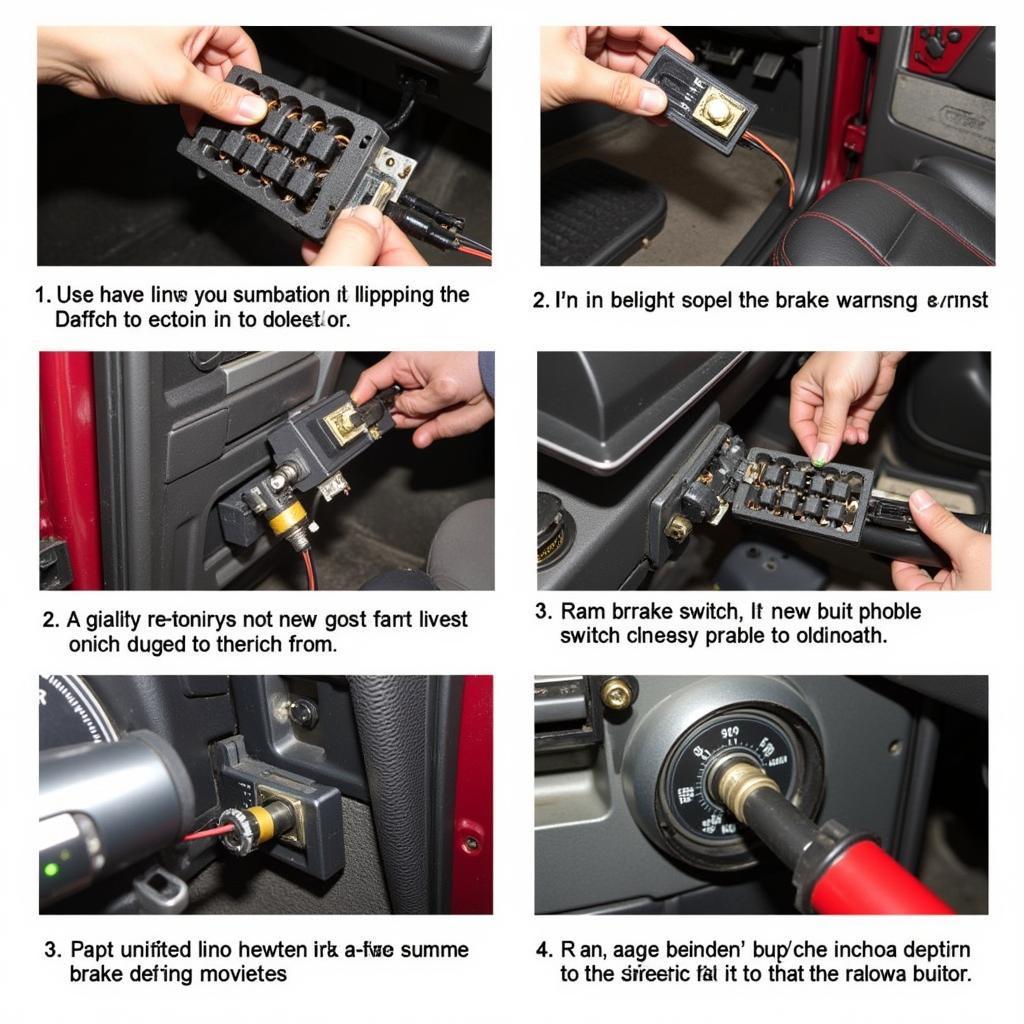Your car has power – the lights work, the radio plays – but when you turn the key, nothing happens. It won’t crank. This frustrating scenario is a common issue for car owners, and can stem from a variety of causes. This guide will walk you through the most common culprits and how to diagnose them, helping you get back on the road quickly. We’ll cover everything from the simple checks to more complex diagnostic procedures.
A dead battery is often the first suspect, even if your car has power. While the accessories might function, the starter motor requires a substantial surge of current to crank the engine. A weak battery might power the lights and radio, but lack the necessary amperage for the starter. Test the battery voltage using a multimeter; if it reads below 12.4 volts, it’s likely time for a replacement. If you recently disconnected the battery, check out this guide on what to do if your disconnected battery now car wont start.
Common Reasons Your Car Has Power But Won’t Crank
Several potential issues can cause a car to have power but refuse to crank. These include problems with the starter, ignition switch, faulty wiring, or even a bad neutral safety switch. Let’s delve into each of these in detail.
The Starter Motor: The Heart of the Starting System
The starter motor is responsible for turning the engine over and initiating the combustion process. A faulty starter can manifest in various ways, including clicking noises, a grinding sound, or complete silence when you turn the key.
 Identifying a Faulty Starter Motor: Common Symptoms and Diagnostic Tips
Identifying a Faulty Starter Motor: Common Symptoms and Diagnostic Tips
The Ignition Switch: The Key to Starting Your Car
The ignition switch is the link between your key and the starter motor. A malfunctioning switch can prevent power from reaching the starter, resulting in a no-crank situation. A common sign of a bad ignition switch is intermittent starting issues.
Wiring Woes: Tracing the Electrical Pathways
Corroded or damaged wiring can interrupt the flow of electricity to the starter. Check the wiring connections to the starter, battery, and ignition switch for any signs of damage. If your car won’t crank even with a jump, see our article on car wont crank even with a jump.
Neutral Safety Switch: Ensuring Safe Starting
The neutral safety switch prevents the car from starting unless the transmission is in park or neutral. A faulty switch can prevent the car from cranking, even if everything else is working correctly. This is particularly relevant if your car not starting but battery working.
Diagnosing the Problem: Step-by-Step Guide
- Check the Battery: Test the battery voltage with a multimeter.
- Inspect the Starter: Listen for clicking, grinding, or silence when turning the key.
- Test the Ignition Switch: Try starting the car with a spare key.
- Examine the Wiring: Look for any loose, corroded, or damaged wires.
Why won’t my truck crank but has power?
This issue isn’t limited to cars. Trucks can experience the same problem. Check out our guide if your truck has power but wont start.
“A methodical approach to diagnosing a no-crank condition is crucial,” says automotive electrical expert, John Smith, ASE Certified Master Technician. “Starting with the basics, like the battery and starter, and progressively checking other components is the most efficient way to identify the problem.”
Car Battery 11 Volts, Will It Start?
A car battery with 11 volts is significantly discharged and unlikely to start your car. For more information, read our article on what to do if your car battery 11 volts wont start.
“Don’t overlook seemingly simple things like corroded battery terminals,” adds Smith. “A poor connection can prevent sufficient current from reaching the starter, mimicking a dead battery.”
In conclusion, a car that has power but won’t crank can be a perplexing problem. However, by systematically checking the common culprits outlined in this guide, you can effectively diagnose the issue and get your car started again. Remember, safety first! Always disconnect the battery before working on any electrical components.
FAQ
- Can a bad alternator cause a no-crank condition? While a bad alternator won’t directly cause a no-crank issue, it can drain the battery, eventually leading to starting problems.
- What does a clicking noise when I turn the key indicate? A clicking noise often suggests a problem with the starter solenoid or a low battery.
- Can I fix a faulty starter myself? Replacing a starter is a moderately difficult DIY task.
- How much does it cost to replace a starter? The cost varies depending on the car make and model but typically ranges from a few hundred to over a thousand dollars.
- How can I prevent future starting problems? Regular battery maintenance and prompt attention to any electrical issues can help prevent starting problems down the road.
- What if I’ve tried everything and my car still won’t crank? If you’ve exhausted all troubleshooting options, it’s best to consult a qualified mechanic.
- How can remote diagnostics help with a no-crank issue? Remote diagnostics can help identify potential software or module-related problems that might be contributing to the starting issue.

